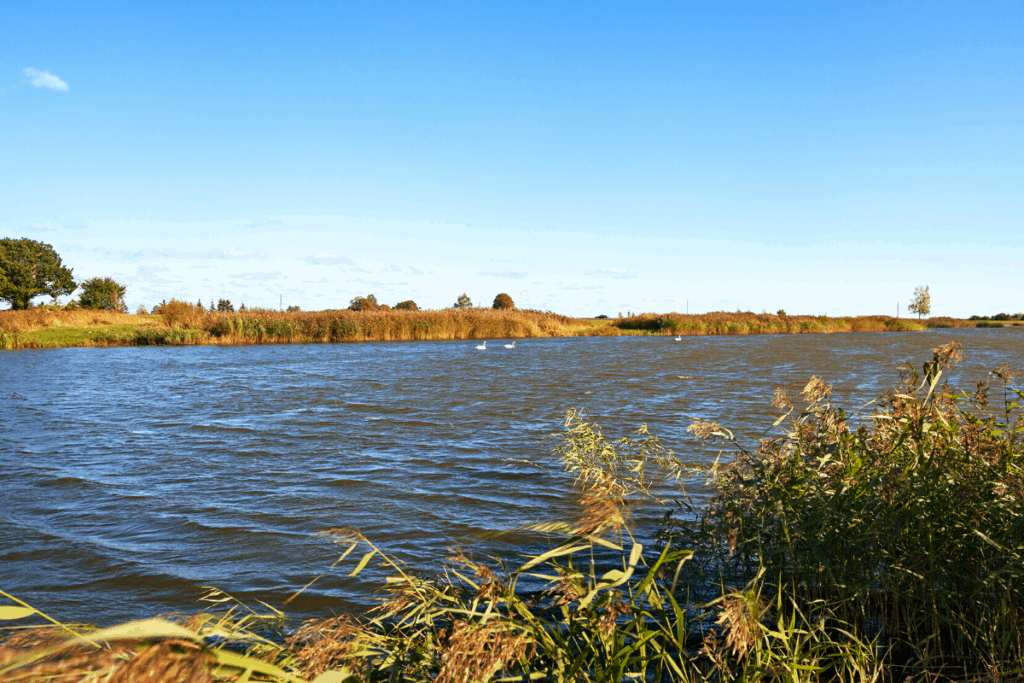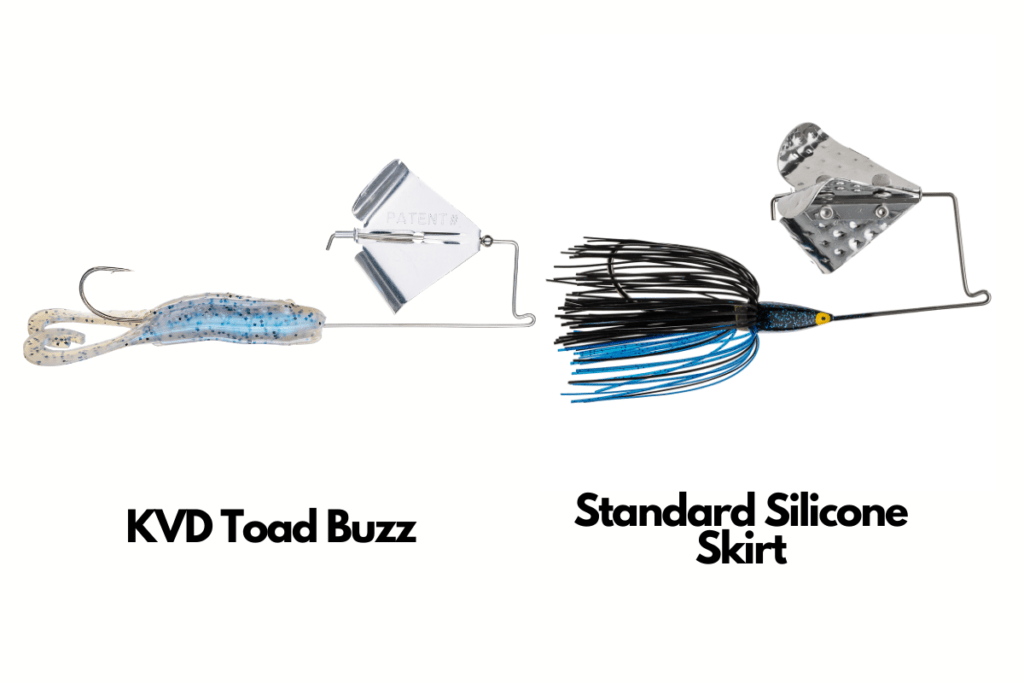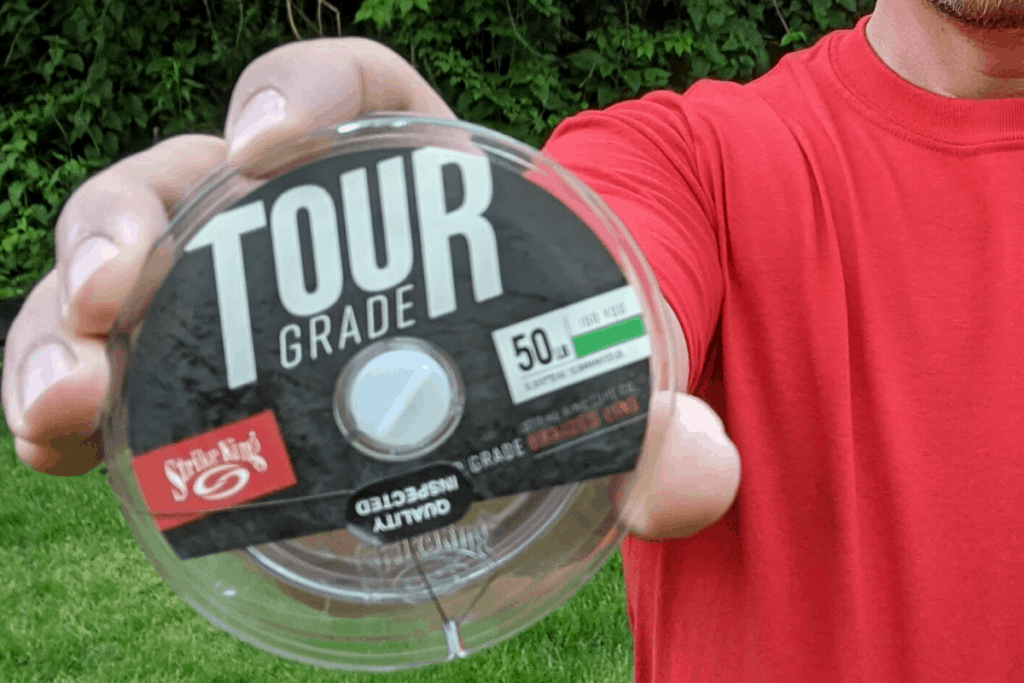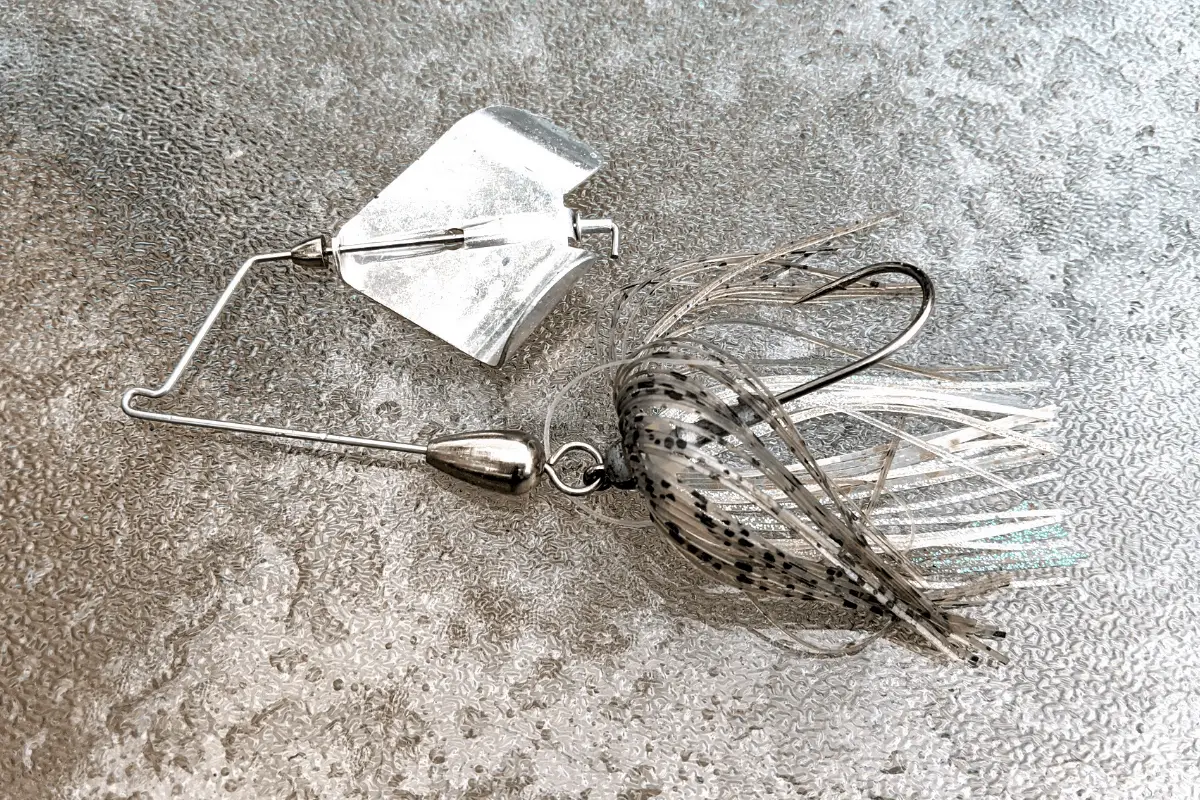There are certain lures that are synonymous with a time of year. A buzzbait is one of those lures that fall bass anglers count on to locate and catch big bass
To make the most of your buzzbait fishing in the fall make sure to utilize the following.
- Throw a buzzbait when the bass are following the baitfish
- Hit a high percentage area from multiple angles
- Adjust the speed to narrow down what the bass want
- Wait on the hookset to avoid missing fish
- Cover a lot of water and pay attention to where the bites come from
Some lures are known for catching larger than average bass – a buzzbait is one of those lures.
1. Follow the Baitfish
When the days grow shorter, bass will start to focus their attention on the baitfish.
The seasonal feeding-frenzy will pull our favorite predators off typical cover and structure and into locations that may be devoid of anything but their food source.
When fishing buzzbaits in the fall, the emphasis needs to be on finding bait more than what looks like traditional “bass holding” features.
That is why using a buzzbait is such an effective lure during the autumn months.
It is designed to cover water and locate feeding fish.
Do you see shad flicking on the surface? Are there schools of minnows roaming the shallows? Can birds be seen circling overhead? Are shorebirds, like herons and egrets watching the water?
All of these signals can help us as anglers narrow down where the baitfish may be on a particular day.
If you are fortunate enough to have quality electronics, take some time to idle and look for balls of bait. How deep are they? If the bait is towards the top of the water column a buzzbait may be just the ticket to a great day.

2. Hit a High-Percentage Area from Multiple Angles
When fishing down the shoreline, there are certain features that offer places where bass can easily pin down and feed on baitfish.
The wind is a key element to consider when fall fishing. It will position the shad and minnows in places that allow the bass to force them along cover.
Targets like wind-blown points, pockets, and grasslines can create ideal locations where feeding predators can push the bait into a hard object and corral the food source. This means that the bass may be facing in a direction they may not normally be looking during other times of the year.
Hitting a likely target on a wind-blown bank from multiple angles is the key to making the most of buzzbait presentations.
When casting to a point that has the wind blowing across or into it, be sure to cast the buzzbait from all sides. Even consider positioning the boat up tight to the shoreline approaching the point and casting back out to deeper water.
Switching up the approach the lure takes to the high percentage area can make the difference between zero bites and getting crushed.

3. Adjust the Speed of the Buzzbait
Varying the cadence and retrieve is always an important part of bass fishing. The same holds true during the fall season.
When the days first grow shorter, but the water temps have not started to plummet yet, a quicker retrieve is an excellent starting place.
Buzzbaits with large, bulky soft plastic trailers, like a Toad Buzz, require the angler to retrieve the lure faster because the bait is heavier and it wants to sink. The added action of the kicking legs on the plastic toad trailer also create a more distinct sound signature than a buzzbait with only a silicone skirt.
As the water temps cool down, try working the buzzbait as slow as possible – keeping the blades just barely turning.
Switching over to a lure with a silicone skirt makes it possible to work the bait slowly across the surface.
Amount of Wind
When the water is slick, a slower retrieve that creates a mild disturbance can be felt and seen from a distance. The slow retrieve during a calm day appears more natural when we think of what fleeing and struggling bait may look like.
When the wind picks up, anglers have a couple of options.
The buzzbait can be fished faster or anglers can upgrade to a larger buzzbait to create a more noticeable disturbance on the surface of the water.
Twitch the Lure
When one bass sees another feeding it creates the urge to take part in the frenzy. This feeding instinct is the most powerful trigger an angler can use to get a bass to bite.
When retrieving a buzzbait, it is good practice to give the lure a slight twitch now-and-then.
This sudden change in the rotation of the blades causes them to spit, or throw, the water. The added surface disturbance mimics bait attempting to flee the open jaws of a hungry predator.
Bass that are in the vicinity of the feeding activity are likely to take part and become aggressive and willing to expand their strike zone by chasing bait.

4. Wait on the Hookset
Surface lures that are visible to the angler all cause the same reaction – an immediate hookset.
When bass anglers use long rods, low-stretch line, and anticipate a surface explosion the unintended consequence is a missed strike. The buzzbait is ripped from the mouth of the bass before it has a chance to really take it.
When filming bass underwater, it is clear that most of the time after the initial strike, a bass will reposition the prey in their mouth before swallowing it. When this happens the bass must open its mouth for a fraction of a second and then close down on the bait a second time once it is in a better position to fully ingest it.
The immediate reaction of the angler to a surface strike can pull the lure away from the bass and then we miss out on the fun of fighting the bass back to the boat.
When fishing a buzzbait, or any topwater, take just a second after the initial strike to pause – then set the hook.
This intentional waiting goes against our bass fishing instincts, but it will increase our strike-to-hookup ratio.
If you prefer to fish a buzzbait with braid or fluorocarbon, this pause is even more important because there is little or no give in the line.
5. Cover Water and Notice the Details
The beauty of a buzzbait is its natural ability to cover a lot of water.
When the bass are likely to be scattered and in random places chasing bait, this ability to search a lot of water is paramount to the lure’s success. Buzzbait fishing in the fall is the time to put the trolling motor down and work the shoreline.
Buzzbaits are lures that search out active fish and our mindset needs to focus on those bass that are willing to feed.
Where did the bite come from?
As mentioned earlier, if there is wind it can pin baitfish and minnows against cover that creates efficient feeding situations for predators.
This cover can be pockets and points along a shoreline or it can be a weedbed off the shore. Docks, boat slips and other types of man-made cover can also offer areas for the bass to pin their food and attack.
When fishing the buzzbait, pay close attention to where you get a strike.
Did the bite come from a distinct piece of cover? Did the grass form a small point under the water? Are the minnows and shad pinned into larger chunk rock?
As anglers, whenever we can narrow down what type of cover or structure the bites are coming from, our odds of repeated success go way up.
Creek Arms and Coves
In larger lakes and reservoirs, anglers may be able to decipher “how far back” the bass are from the main lake.
When the water temperatures change and the amount of daylight diminishes, the baitfish and the bass will keep working to the backs of large coves and pockets.
Are the bass half-way back? Are they all the way back? Are they still at the mouth of the creek arm close to deeper water access?
While fall bass fishing is most definitely a follow-the-bait process, the bait will likely be in defined areas and it may be a repeatable pattern from one part of the lake to the next.
Why is this?
Without the intense sunlight from summer beating down, the thermocline that forms on many bodies of water, cannot maintain the same depth it did earlier. The surface temps dropping will cause the water column to eventually turn over.
This change drives the bass shallower meaning we need to pay attention to the details.
Final Thoughts
Following these 5 strategies and tips will help to make the most of your buzzbait fishing:
- Follow the baitfish
- Cast from multiple angles
- Adjust the speed of the lure
- Wait on the hookset
- Cover a lot of water and pay attention to details
Buzzbaits are one of those lures that tend to get bites from quality bass. They are fun to fish and capture our curiosity with the strange shape, blade configuration, and sound they emit.
Buzzbaits are fun. Period.
Tight lines. Be safe and make sure to encourage someone today. You never know how you may change their life forever.
Isaiah 6:8

